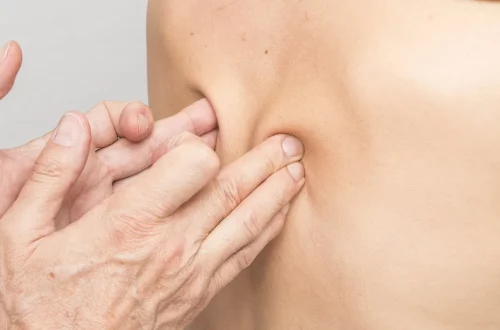
Understanding Eyebrow Scars: Causes, Treatments, and Care Tips
Eyebrow scars can often be a source of concern for many individuals, whether they are the result of accidents, surgical procedures, or skin conditions. Scarring in this delicate area can impact not only physical appearance but also self-esteem and personal expression. The eyebrows play a significant role in framing the face, and any scars can alter their natural shape and beauty. Understanding the underlying causes of eyebrow scars is crucial for anyone looking to address or treat them effectively.
From the healing process of the skin to the psychological implications of visible scars, the journey to understanding eyebrow scars can be multifaceted. Factors such as skin type, the severity of the scar, and individual healing capabilities all play a role in how scars develop and fade over time. Additionally, the methods available for treatment and care can vary widely, depending on the scar’s characteristics and the individual’s specific needs.
As we delve deeper into the topic, it’s essential to consider both the physical and emotional aspects of eyebrow scars, as well as the various approaches to treatment and care. By exploring these dimensions, we can gain a comprehensive understanding of eyebrow scars and how to manage them effectively.
Common Causes of Eyebrow Scarring
Eyebrow scars can arise from a variety of causes, each stemming from different circumstances. One of the most prevalent reasons for eyebrow scarring is injury. Accidents, whether minor or severe, can lead to cuts or abrasions that result in scarring as they heal. These injuries can occur from everyday activities, sports, or even household mishaps. The location and depth of the injury significantly influence the scar’s appearance and healing process.
Another common cause of eyebrow scars is surgical procedures. Cosmetic surgeries, such as brow lifts or eyebrow tattoos, can leave scars if not conducted with precision or if proper aftercare is not followed. Additionally, dermatological conditions, such as acne or eczema, can lead to scarring in the eyebrow area, particularly if the skin is repeatedly irritated or inflamed.
Moreover, certain skin types are more prone to scarring than others. Individuals with darker skin may experience hyperpigmentation, while those with lighter skin might have more noticeable textural scars. Understanding these variations can help individuals manage their expectations when it comes to scarring and healing.
Lastly, genetic predisposition plays a role in how individuals scar. Some people naturally develop more pronounced scars due to their skin’s healing response. This genetic factor can influence not only the scar’s appearance but also the effectiveness of various treatments. By recognizing these common causes of eyebrow scars, individuals can take proactive steps in seeking appropriate care and treatment.
Effective Treatment Options for Eyebrow Scars
When it comes to treating eyebrow scars, there are several effective options available depending on the severity and type of scar. One of the most common methods is topical treatment. Over-the-counter creams and gels that contain ingredients like silicone, vitamin E, or hydroquinone can help reduce the appearance of scars over time. These products work by hydrating the scarred area, promoting collagen production, and evening skin tone.
For more pronounced scars, individuals may consider professional treatments. Dermatologists often recommend chemical peels or microdermabrasion, both of which exfoliate the skin and can improve texture and pigmentation issues. These procedures can help fade scars and promote healthier skin regeneration.
Another option is laser therapy, which uses focused light to break down scar tissue. Laser treatments can significantly improve the appearance of scars and are customized to suit the individual’s skin type and scar characteristics. This method is particularly effective for hypertrophic scars, which are raised and textured.
In some cases, surgical revision may be necessary. This involves removing the scar tissue and suturing the skin in a way that minimizes future scarring. However, surgical options should be discussed thoroughly with a qualified professional to weigh the benefits and risks.
Lastly, for those looking for more natural remedies, essential oils like lavender or tea tree oil are often cited for their skin-healing properties. While the effectiveness of these natural treatments can vary, many individuals find them to be a gentle alternative for scar management.
Aftercare and Daily Care Tips for Eyebrow Scars
Proper aftercare is crucial for anyone dealing with eyebrow scars, as it can significantly influence healing and scar appearance. One of the most important steps is to keep the area clean and moisturized. Gently washing the eyebrow area with a mild cleanser helps prevent infection and promotes healing. Following this, applying a suitable moisturizer can help keep the skin hydrated.
Sun protection is another vital component of scar care. Scars are sensitive to UV exposure, which can lead to discoloration. Using a broad-spectrum sunscreen on the scarred area, even on cloudy days, can help prevent further pigmentation issues and protect the skin from harmful rays.
Avoiding picking or scratching the scar is essential as well. This can not only worsen the scar but also lead to infections. Instead, using a soft cloth or gauze to protect the area during the healing process is advisable.
In addition, incorporating a healthy diet rich in vitamins A, C, and E, along with zinc, can support skin healing. Staying hydrated and reducing inflammatory foods can also aid in overall skin health.
Lastly, maintaining a consistent skincare routine tailored to the scarred area can yield positive results over time. Regularly applying recommended treatments and following professional advice can help manage the appearance of eyebrow scars effectively.
**Disclaimer:** This article is not intended as medical advice. For any health concerns or issues related to eyebrow scars, please consult with a qualified healthcare professional.




